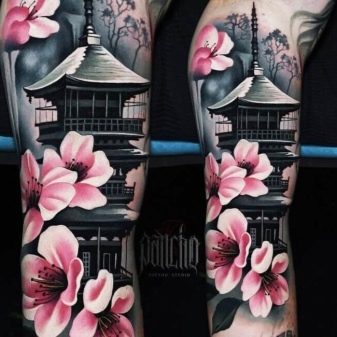Japan Style Tattoo Sleeves
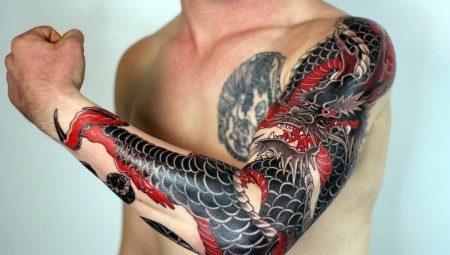
A sleeve in Japanese technique is a rather extraordinary and at the same time ambiguous body decoration... Such tattoos are usually filled by men, since large-scale compositions on their hands personify masculinity, physical strength and solid life principles. The style of Japanese tattoos is in demand not only among the inhabitants of the Land of the Rising Sun - it has become widespread in Russia, in Europe and in America.

Peculiarities
A voluminous tattoo sleeve in oriental technique is a good opportunity for any artist to demonstrate their exceptional degree of creativity and professionalism. And for the owner of the tattoo, such a sleeve will be a good opportunity to emphasize their strong character traits, to demonstrate charisma and brutality.
In the past, sleeve tattoos for Japanese men were a special privilege. Such honors were conferred exclusively on emperors and the ruling elite. At the same time, only the best craftsmen were allowed to work. The sleeve starts from the wrist and goes to the shoulder area, the image passes through the elbow and forearm. The tattoo on the hand in the classic version does not apply to the sleeve. The working surface is quite large, therefore, the tattoo sleeve is performed both in the form of a single plot composition, and separately - such drawings are collected from several unrelated sketches. However, the most widespread in Japanese culture was the first option, which makes it easy to recognize the semantic message of a tattoo.
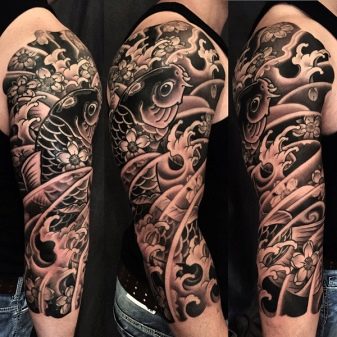
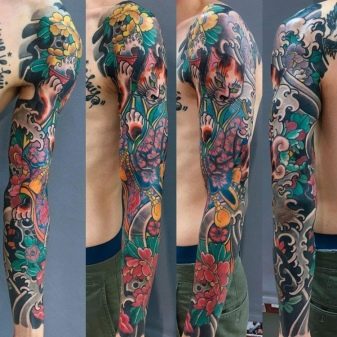
The subject line of Japanese drawings may vary depending on the characters depicted. But in any case, it touches on deep topics: eternity, the transience of being, the cyclical nature of life and death, good and evil. The essence of any Japanese tattoo is to designate the main meaning of existence.
At the same time, secondary symbolism may be present in the sleeves. For example, sacred images of a dragon and koi carp in combination with hieroglyphs, outlines of plants and flowers. Additional signs allow you to expand the meaning of the tattoo and correct its energetic message.

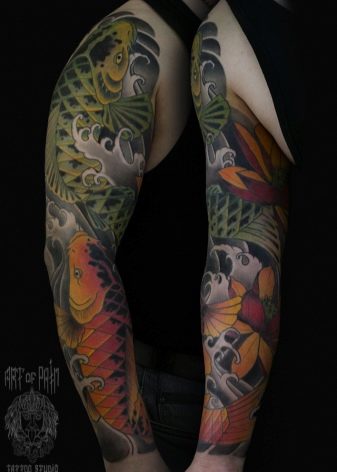
Japanese sages believed that a tattoo has the property of influencing its owner, developing certain character traits in him... Such tattoos were considered amulets that could protect from enemies, attract good luck on the hunt and protect from the action of evil forces. A special place in Japanese symbolism is occupied by images with theological meaning, as well as scenes calling for loyalty, love and honor.
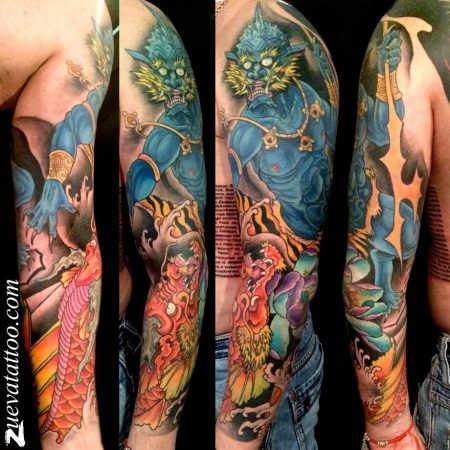
In the Land of the Rising Sun, the place of tattooing has always been of great importance. It was believed that a tattoo on the arm emphasizes physical strength, fortitude, and majesty of a person. Such men are renowned for their ability to bring people together and to lead.
However, we must not forget that in Japan it is forbidden to have tattoos on the body - any body painting in this culture personifies belonging to the yakuza. Most offices have a strict dress code that also applies to tattoos. If a Japanese man has a tattoo, he must necessarily hide it from prying eyes.
Failure to comply with this rule will result in a request to leave the public place or even dismissal.
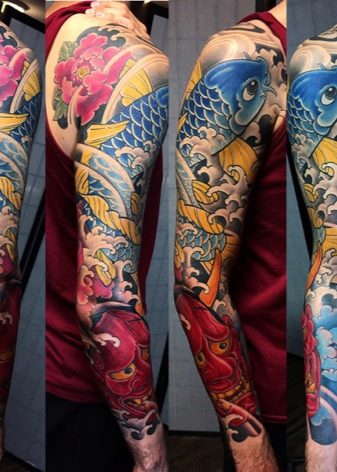
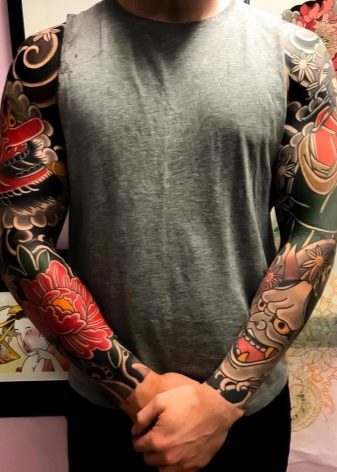
Variants and sketches of tattoos
There are themes that are considered especially popular when creating a Japanese sleeve and half-sleeve tattoo.
- Common images include dragon. This mythical creature personifies nobility, fortitude, protection from the destructive fire element. The dragon in mythology is endowed with energy and power.
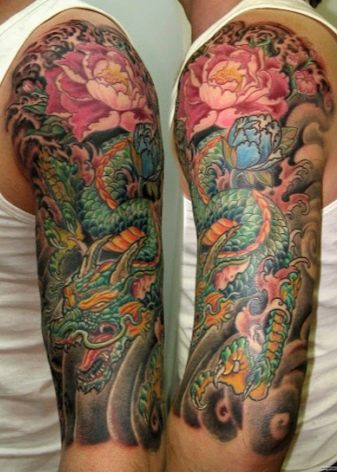
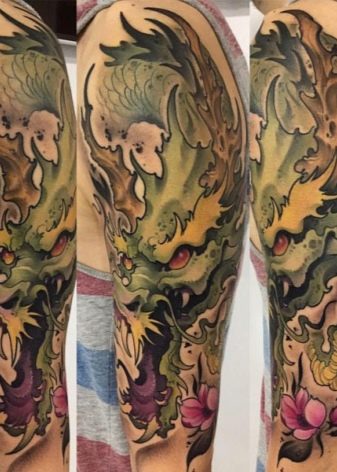
- In contrast, you can stuff on the sleeve fish, most often it is koi carp. He personifies peacefulness, composure and determination. If people choosing a tattoo with a dragon are usually distinguished by aggression and irascibility, then the owners of carp are wiser and more discerning. They always think about how their actions will affect themselves. In some scenes, the koi carp transforms into a dragon - this often happens in the finale of all Japanese legends. Such a tattoo symbolizes courage, courage and boldness.
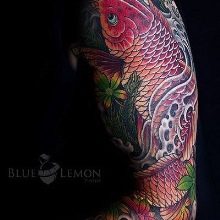
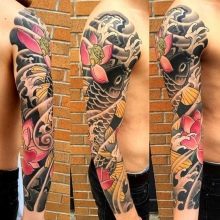
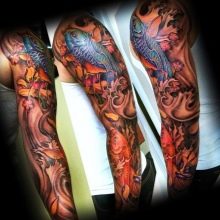
- Semantic meaning carp may vary depending on the characteristics of the picture. For example, a fish with a light pink tint palette personifies purity and innocence, such images are chosen by girls. Representatives of the strong half of humanity, who have seen a lot in their life path, prefer black drawings.
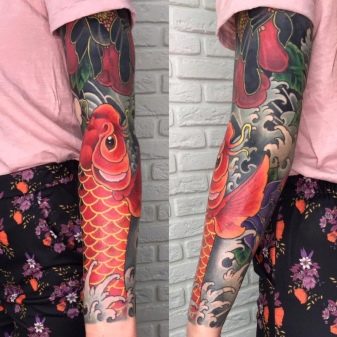
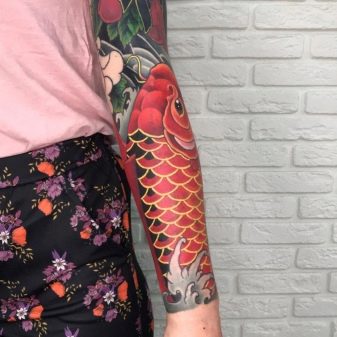
- Another interesting symbolism is Tiger... This animal is used in Japanese art as a symbol of courage and immense physical strength. Sleeves with a full arm tiger look very stylish and bright.
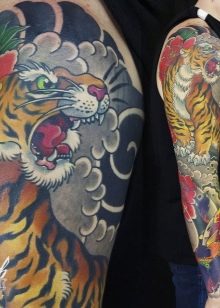
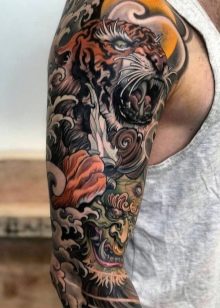
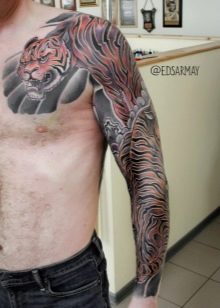
- Quite a common topic - hieroglyphs... However, when choosing a picture, you should be as careful as possible to the meaning and symbolism. The Japanese language is multifaceted and complex, any extra touch can drastically change the meaning of a symbol. A sleeve with hieroglyphs is often chosen by lovers - in this way they prove to partners the strength of their feelings and try to perpetuate the memory of a wedding, anniversary, birth of a child or other significant event for a lifetime.
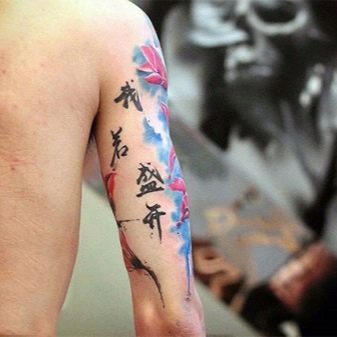

- Of great interest is demonic symbolism... However, these drawings do not carry any negative message. On the contrary, they are considered an amulet that protects its owner on a moral and physical level. Japanese masks of the demons of Chania, Oni, Tengu and Radzin are in wide demand. For their owner, they symbolize the ability to resist internal weaknesses, vices and temptations.
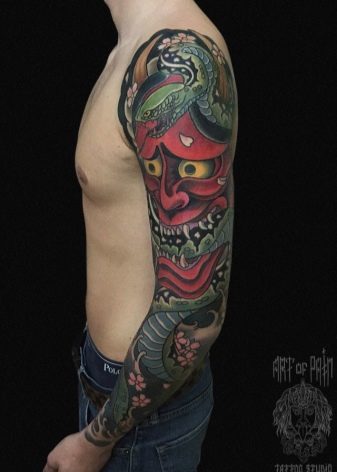
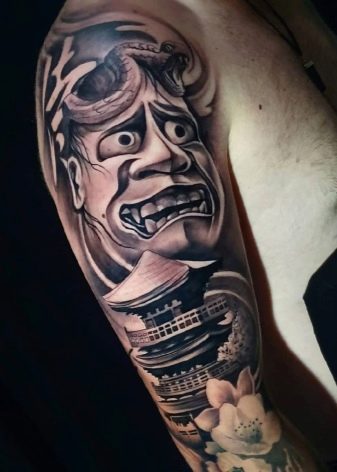
- Continuing the mythological theme, one cannot fail to mention Phoenix... This bird burns out at the end of its life, but soon rises from the ashes. That is why such a tattoo becomes the personification of the cyclical nature of life, rebirth and immortality. It is believed that such a tattoo gives its owner the strength to fight any troubles in life.
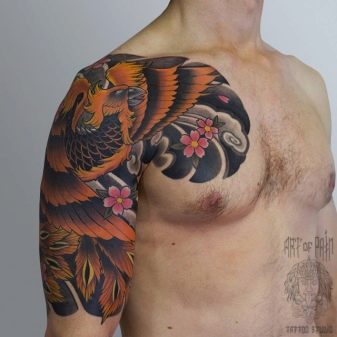
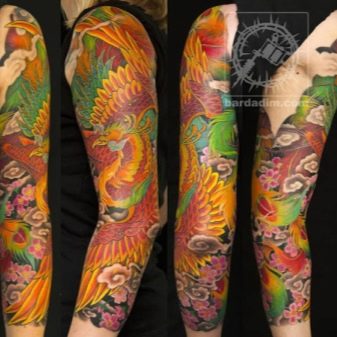
- Slightly less common floral ornaments, these days, girls are more likely to fill such stories on their hands. However, in the past, many famous warriors applied the image of buds to the body - they perceived this image as a talisman against death, bad intentions and enemies.
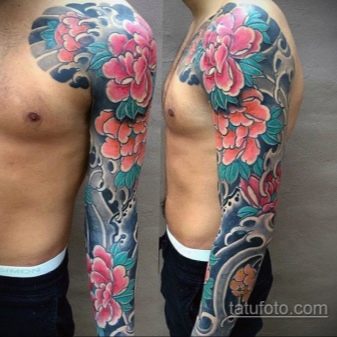
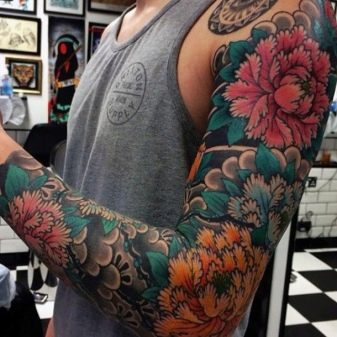
- In the Land of the Rising Sun, the most popular are motives with sakura. This is an unusually beautiful plant that blooms only 3 days a year, but this is precisely the sacred meaning of the image. The existence of man on Earth is so fleeting that every moment he lives must be appreciated. A sleeve with sakura is a popular female style, with such a tattoo girls emphasize their youth, beauty and spiritual morality.
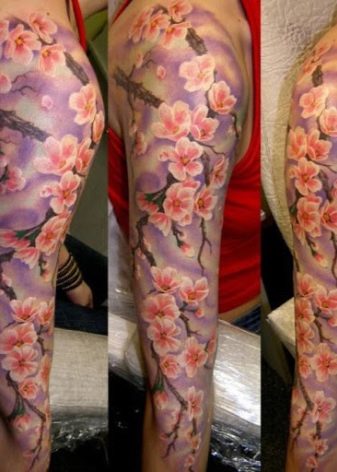
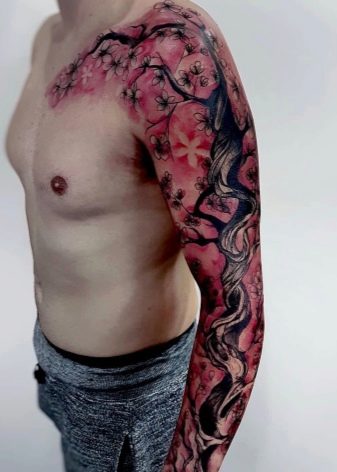
- Another interesting topic is image of black samurai On the hand. This is the personification of a warrior man, a brave and courageous person. Warriors in Japan have always been famous for their agility, physical strength and wisdom. It was they who ensured the safety of the life of the Supreme Ruler in the past.
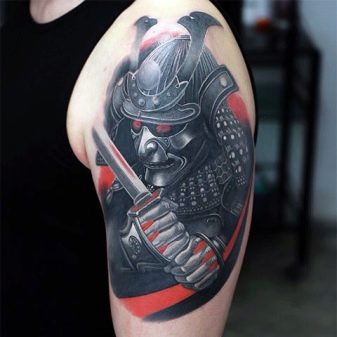
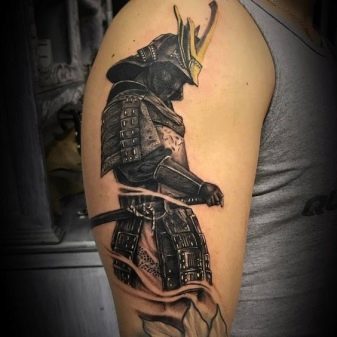
Color solutions
Black and white monochrome images can be used when creating Japanese sleeves. However, the oriental culture is so bright, colorful and distinctive that tattoos here are often done in multi-color. Japanese patterns are characterized by a smooth asymmetrical outline, highlighted by neat thin lines. The necessary saturation of the image is achieved by selecting the dosage of various tones.
When applying, a special filling technique is used - while the edges of the tattoo look brighter and more contrasting, and the center, on the contrary, is more lightened and translucent.
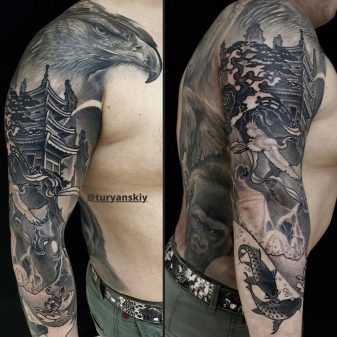

And, of course, in Japanese culture, like in no other, flower symbols are of great importance. This should be taken into account when applying a tattoo. For example, white in the East represents death and sorrow. Pink, on the other hand, speaks of happiness and success.

